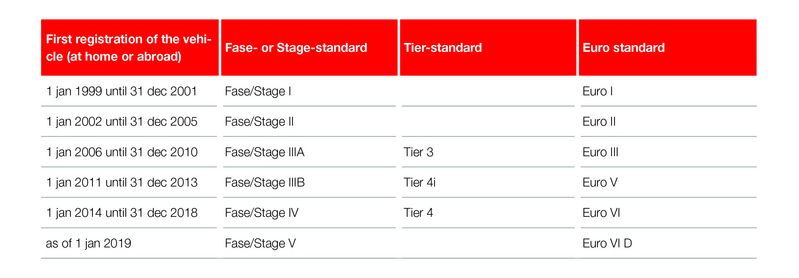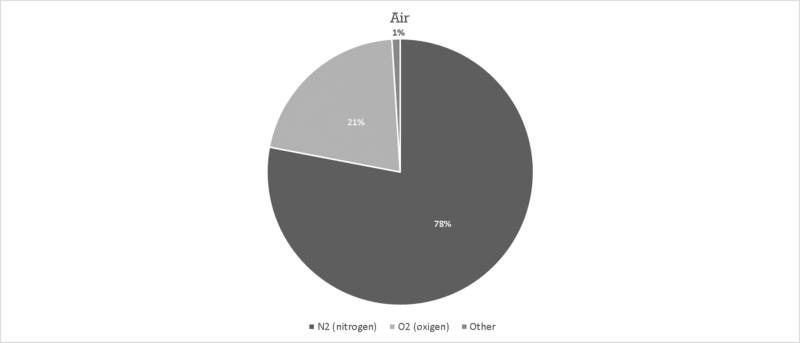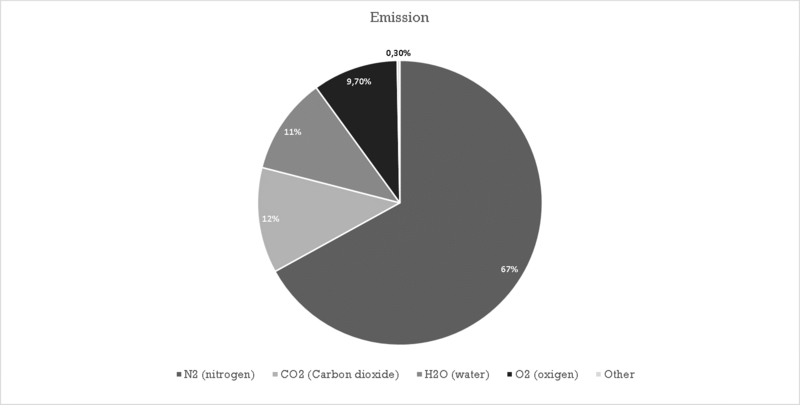What about emmission standards? (part 1)
What about emmission standards?

Given the current situation in which environmental issues are playing an increasingly important role, mateco is paying more and more attention to how we can reduce emissions. Nevertheless, there is still a lot of confusion about what types of emissions and what kind of emission standards there are. After all, which standards are actually applied to aerial platforms? And what exactly are those substances that are so harmful to the environment?
There are 3 types of emission standards::
- Euro standard: only applicable to road traffic
- Tier standard: U.S. standard for off-road vehicles
- Stage standard: European standard for non-road traffic and industrial engines
These standards are not synchronous with each other. In Europe, engine manufacturers started Stage 5 on 1 January 2019, while the Tier standard stopped at Tier 4F (F = Final). The starting date of the standard for a machine may not be more than 18 months after the starting date for the mounted engine.
So when it comes to the machines of mateco Nederland, we are dealing with the Stage standard.
In addition to the standards, it is of course also good to know what they stand for and which of the exhaust fumes are actually harmful and what we (can) do about it. What goes into an engine and what goes out? And what part of the exhaust fumes causes so much damage?
What goes in is basically air;
The N2 (nitrogen) that makes up 78% of this is not the harmful nitrogen that the current problem is about.
This is included in the other emissions in the diagram above. These other emissions (0.3%) contain the following substances:
- 0,02% SO2
Sulphur dioxide is formed by the reaction between oxygen and sulphur. Sulphur is added to diesel because it has a lubricating effect at high temperatures. However, sulphur dioxide is toxic and causes acid rain.
- 0,05% CO
Carbon monoxide is the result of incomplete combustion. Since a diesel always runs with a surplus of air (poor mixture), the concentration is not that high.
- 0,03% HC
Hydrocarbon is a volatile component of fuel, which is not burned in the cylinder. The amount of this is also very limited, as a diesel runs with a poor mixture.
- 0,15% NOx
Nitrogen oxide is an irritant toxic gas, formed by a poor mixture and high temperatures. These gases cause ozone distortion in the lower layers of the atmosphere. This is the kind of nitrogen that has been the subject of much controversy recently.
- 0,05% PM (stands for 'particulate matter’)
These are solidified particles of fuel compounds that have not been burned in the cylinder. They are harmful to the respiratory tract. Poor combustion conditions can increase the quantities enormously.
So what are the engine manufacturers doing about this right now?
- CO2 : Fuel consumption down, so efficiency up
- CO : Oxidation catalyst
- HC : Oxidation catalyst
- Nox : EGR and SCR (ad blue)
- PM : Optimizing combustion process and DPF (soot filter)
- SO2 : Reduce fuel sulphur content = legislation
Hello tvhequipment.com webmaster, Thanks for the well-researched post!
Hello tvhequipment.com administrator, You always provide clear explanations and step-by-step instructions.
Hello tvhequipment.com webmaster, Great content!



